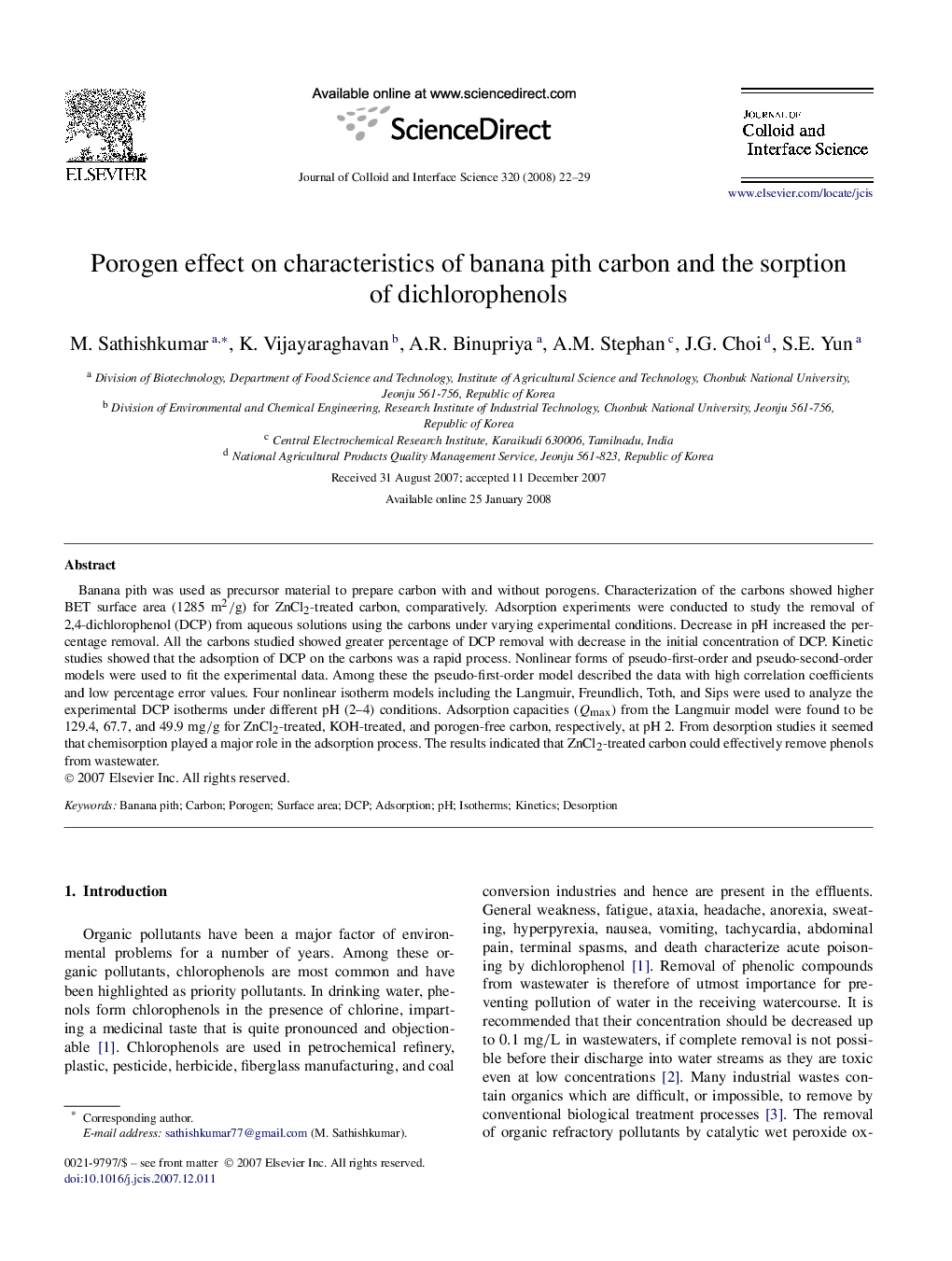| Article ID | Journal | Published Year | Pages | File Type |
|---|---|---|---|---|
| 611613 | Journal of Colloid and Interface Science | 2008 | 8 Pages |
Banana pith was used as precursor material to prepare carbon with and without porogens. Characterization of the carbons showed higher BET surface area (1285 m2/g) for ZnCl2-treated carbon, comparatively. Adsorption experiments were conducted to study the removal of 2,4-dichlorophenol (DCP) from aqueous solutions using the carbons under varying experimental conditions. Decrease in pH increased the percentage removal. All the carbons studied showed greater percentage of DCP removal with decrease in the initial concentration of DCP. Kinetic studies showed that the adsorption of DCP on the carbons was a rapid process. Nonlinear forms of pseudo-first-order and pseudo-second-order models were used to fit the experimental data. Among these the pseudo-first-order model described the data with high correlation coefficients and low percentage error values. Four nonlinear isotherm models including the Langmuir, Freundlich, Toth, and Sips were used to analyze the experimental DCP isotherms under different pH (2–4) conditions. Adsorption capacities (QmaxQmax) from the Langmuir model were found to be 129.4, 67.7, and 49.9 mg/g for ZnCl2-treated, KOH-treated, and porogen-free carbon, respectively, at pH 2. From desorption studies it seemed that chemisorption played a major role in the adsorption process. The results indicated that ZnCl2-treated carbon could effectively remove phenols from wastewater.
Graphical abstractIncreasing the porosity of the carbon increases the total surface area of carbon facilitating higher adsorption of the adsorbates.Figure optionsDownload full-size imageDownload as PowerPoint slide
